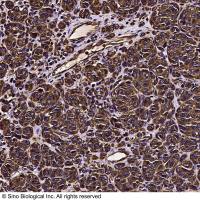The use of formaldehyde as a reagent for fixing tissue was first identified over a century ago (1 ), and because of its efficacy in a broad range of situations, at varying concentrations and with virtually all tissues, it has remained one of the most widely used fixatives. Formaldehyde is a reactive electrophilic species (2 ,3 ) that reacts readily with primary amines, amide groups, aromatic rings, and alcoholic hydroxyl groups, crosslinking various biological macromolecules. For histological purposes, this crosslinking is highly desirable in that it allows considerable morphological detail to be maintained, but such fixation invariably results in a corresponding time-dependent loss of antigenicity (4 ). Consequently, early immunocytochemical protocols used fresh/frozen or alcohol-fixed tissue only (5 ), retaining tissue antigenicity, but at the expense of morphology. Despite the effects of formalin fixation, however, the loss of antigenicity is neither complete nor irreversible. Indeed, formaldehydefixed tissue has been successfully used for the detection of many different tissue antigens, such as neurotransmitters (6 ), neuropeptides (7 ), cell surface markers (8 ), and enzymes (9 ). The suitability of formalin-fixed tissue for immunocytochemistry has been further enhanced with the development of sensitive indirect staining methods, such as PAP (peroxidase antiperoxidase) (10 ) and, more recently, avidin-biotin complex (ABC) methods (11 ).






